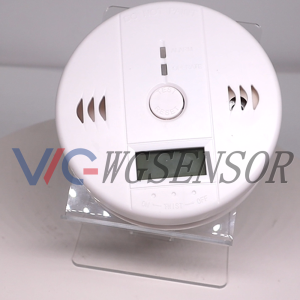Carbon monoxide (CO) detectors play a pivotal role in safeguarding lives by detecting the presence of this colorless, odorless, and highly toxic gas. Here’s a comprehensive overview to shed light on the importance and functioning of these devices.
What is Carbon Monoxide?
Carbon monoxide is a silent killer. It is a byproduct of incomplete combustion of carbon-based fuels like gas, oil, wood, and coal. Exposure to elevated levels of CO can lead to severe health issues or even fatalities as it hampers the body’s ability to carry oxygen.
Purpose of Carbon Monoxide Detectors
CO detectors are designed to continuously monitor the air for any traces of carbon monoxide. When the concentration reaches a dangerous level, the detector alerts occupants with a loud alarm, allowing them to evacuate and mitigate the hazard.
How Do They Work?
Most CO detectors employ electrochemical sensing technology. Inside the detector, there’s a chemical solution that interacts with CO. This reaction produces an electric current that triggers the alarm when CO levels surpass the predefined threshold.
Placement of Detectors
It’s crucial to strategically place CO detectors in your home. Install one on each level, near sleeping areas, and in proximity to fuel-burning appliances like furnaces, water heaters, and stoves. Follow manufacturer guidelines for optimum placemen.
Maintenance and Testing
Regular maintenance is essential. Test CO detectors monthly, replace batteries annually (if battery-operated), and replace the entire unit according to manufacturer recommendations (typically every 5-7 years). Ensure detectors are free from dust or obstruction.
Types of Detectors
There are two main types: plug-in and hardwired. Plug-in detectors are portable and can be moved easily, while hardwired ones are connected directly to the electrical system of the house and often come with a battery backup.
Response to Alarms
If the CO detector alarm goes off, take immediate action. Evacuate the premises, ventilate the area by opening windows and doors, and contact emergency services. Do not re-enter until the area is deemed safe.
Conclusion
Carbon monoxide detectors are indispensable devices that serve as early warning systems against a potentially lethal gas. Understanding their operation, proper placement, maintenance, and appropriate response to alarms are crucial for ensuring the safety of households.
Remember, installing CO detectors is a proactive step towards protecting yourself and your loved ones from the dangers of carbon monoxide poisoning.


Please contact us for free quotation by form below. We promise the quickest response within 24 hours: